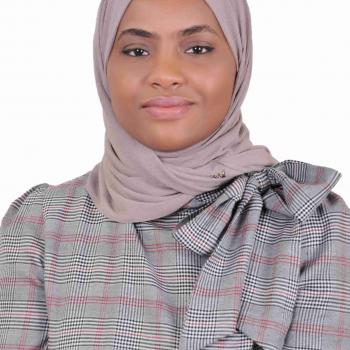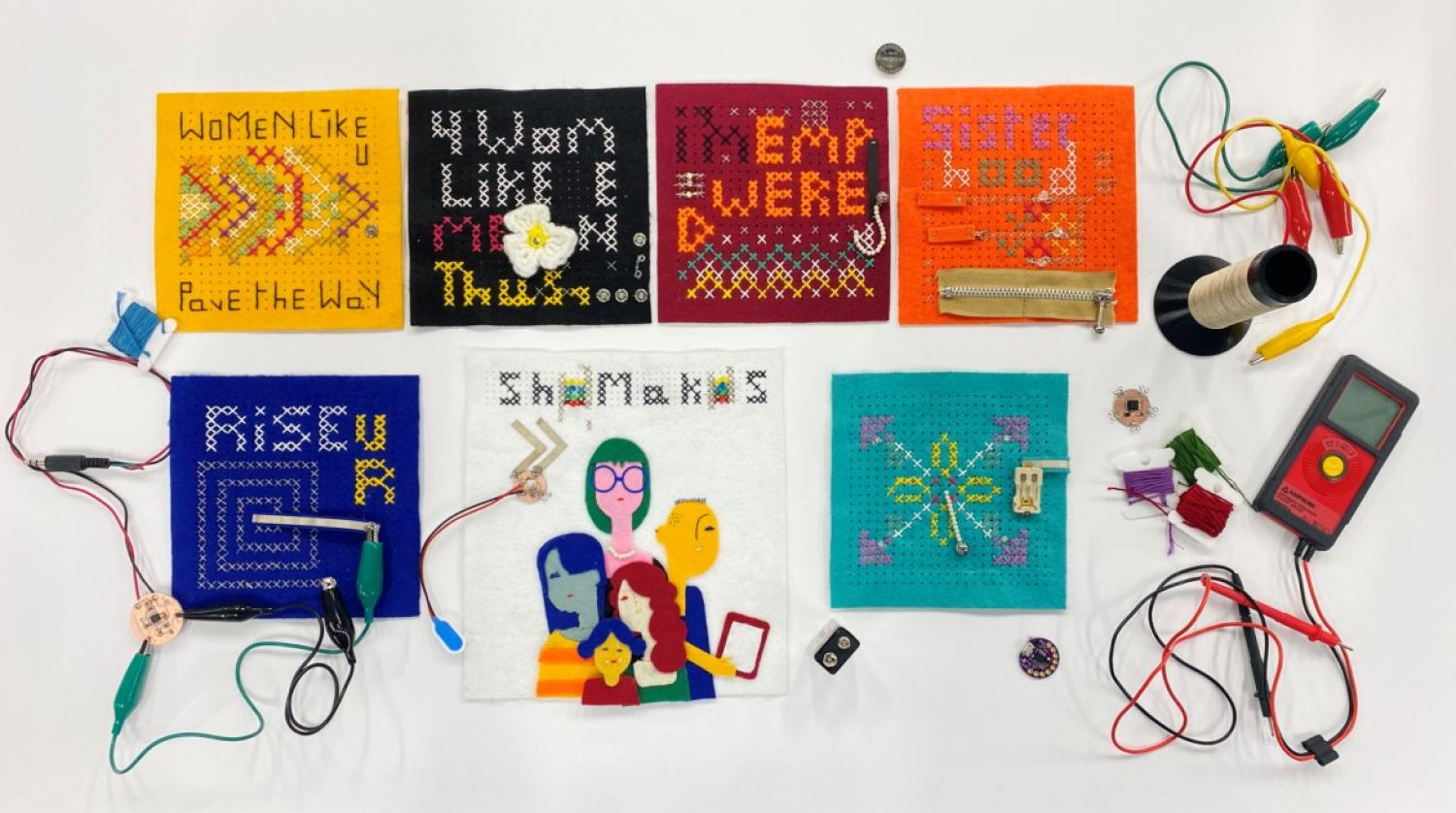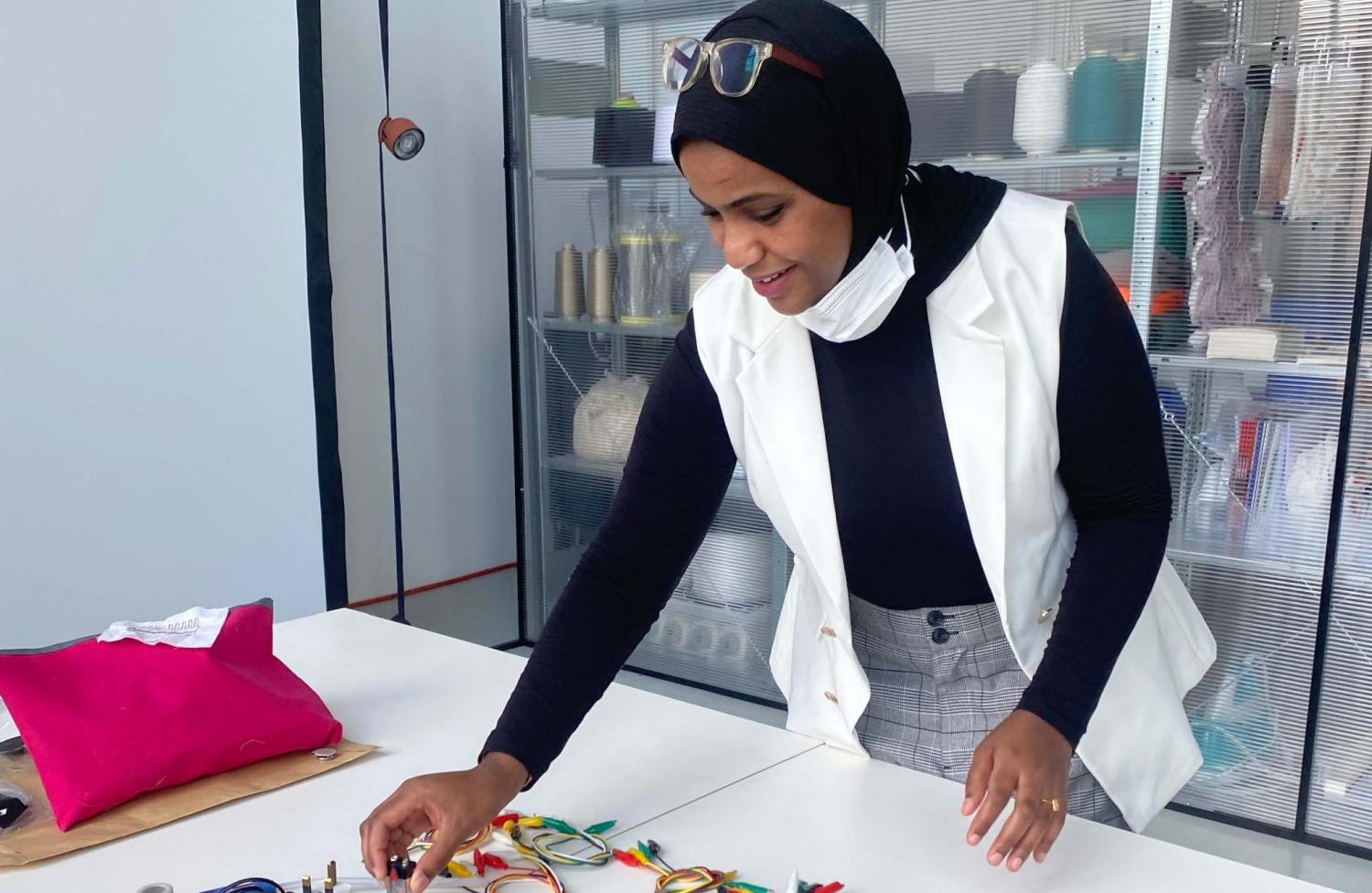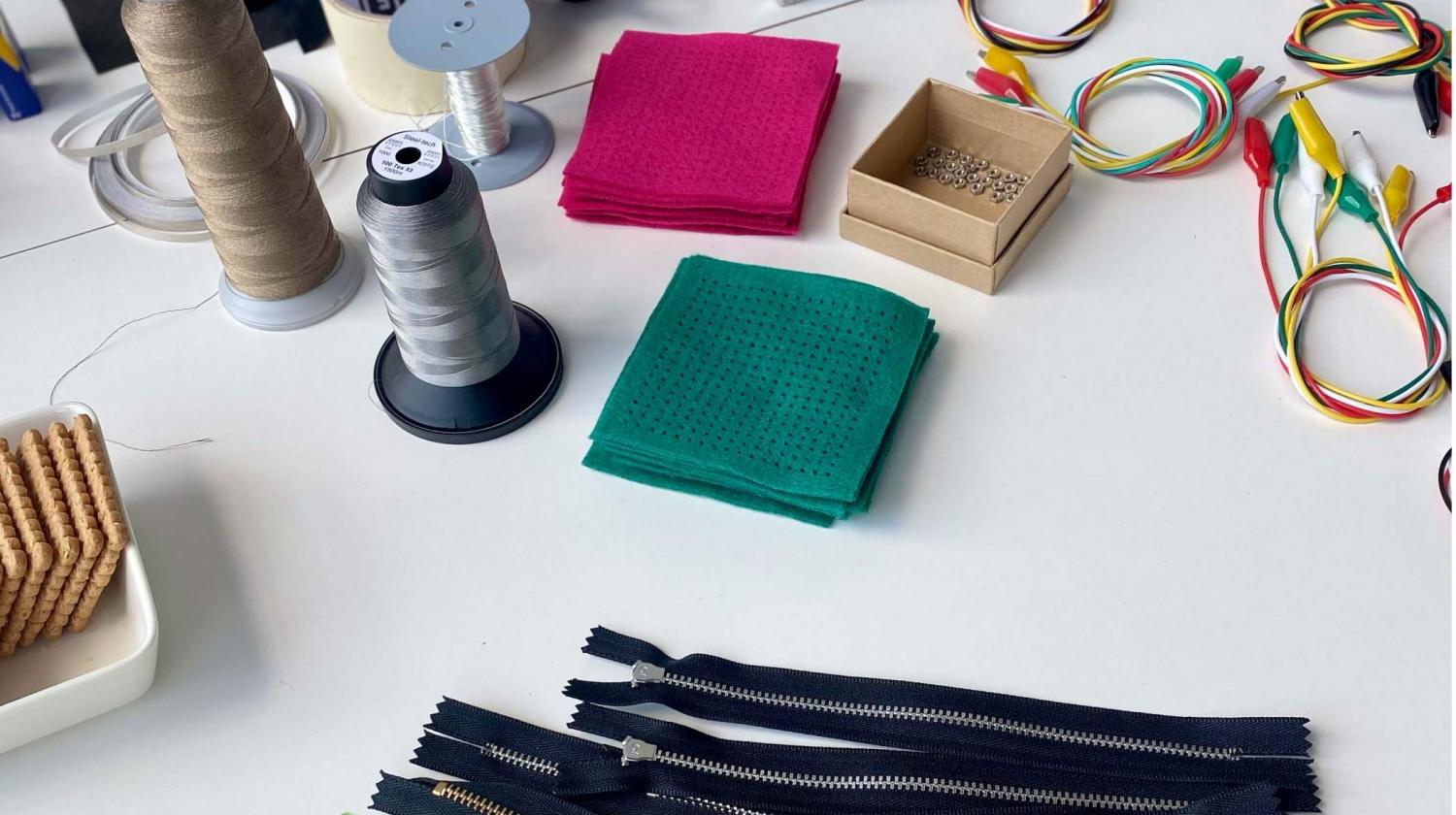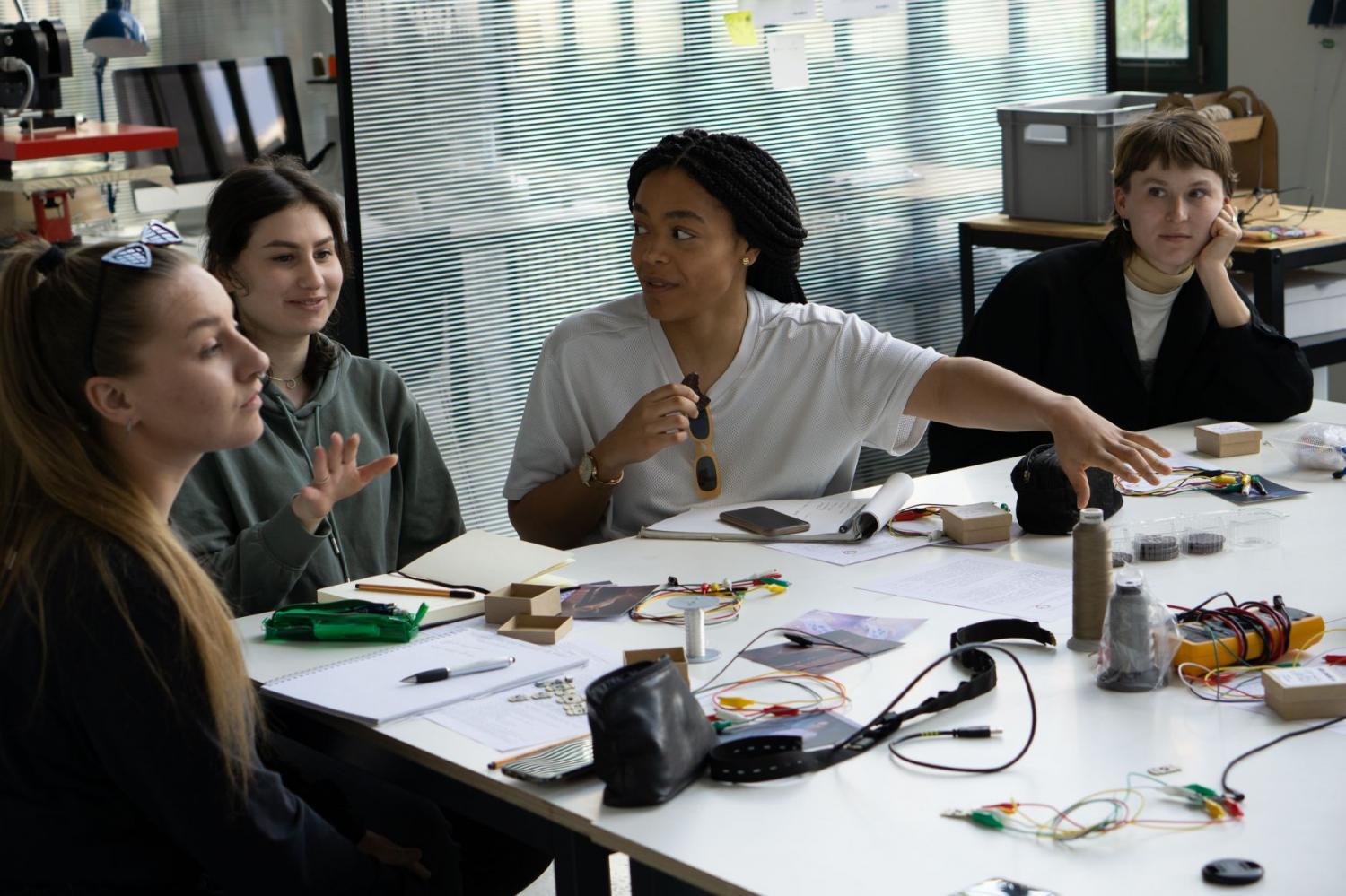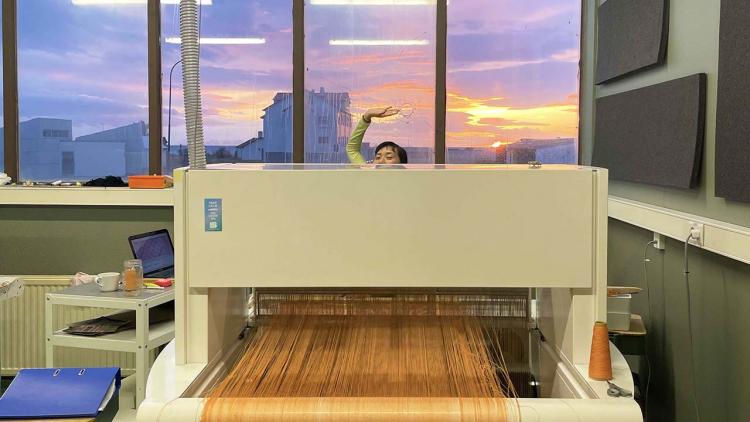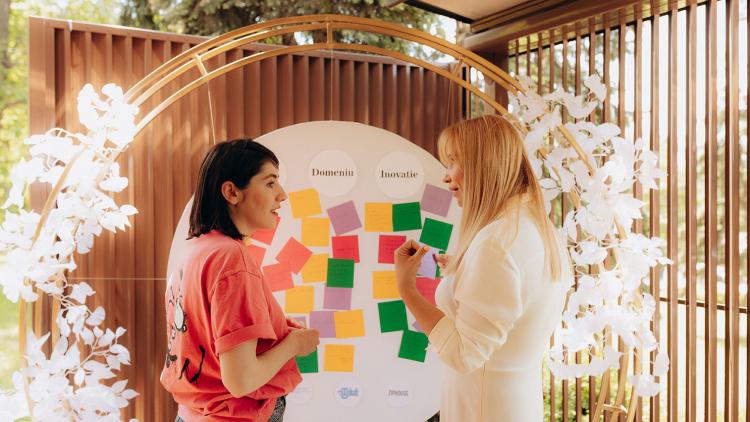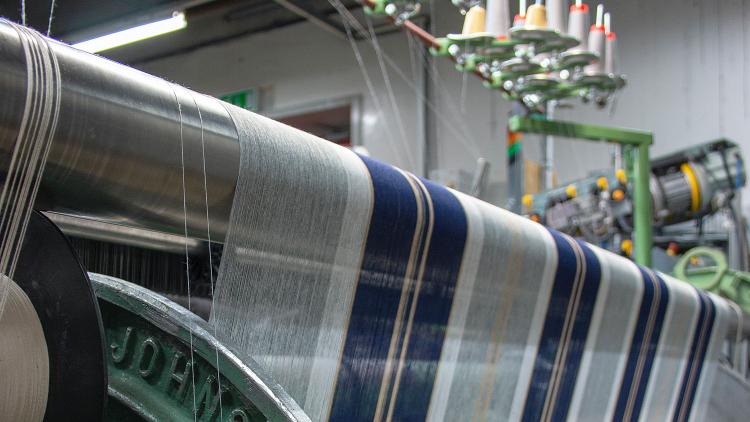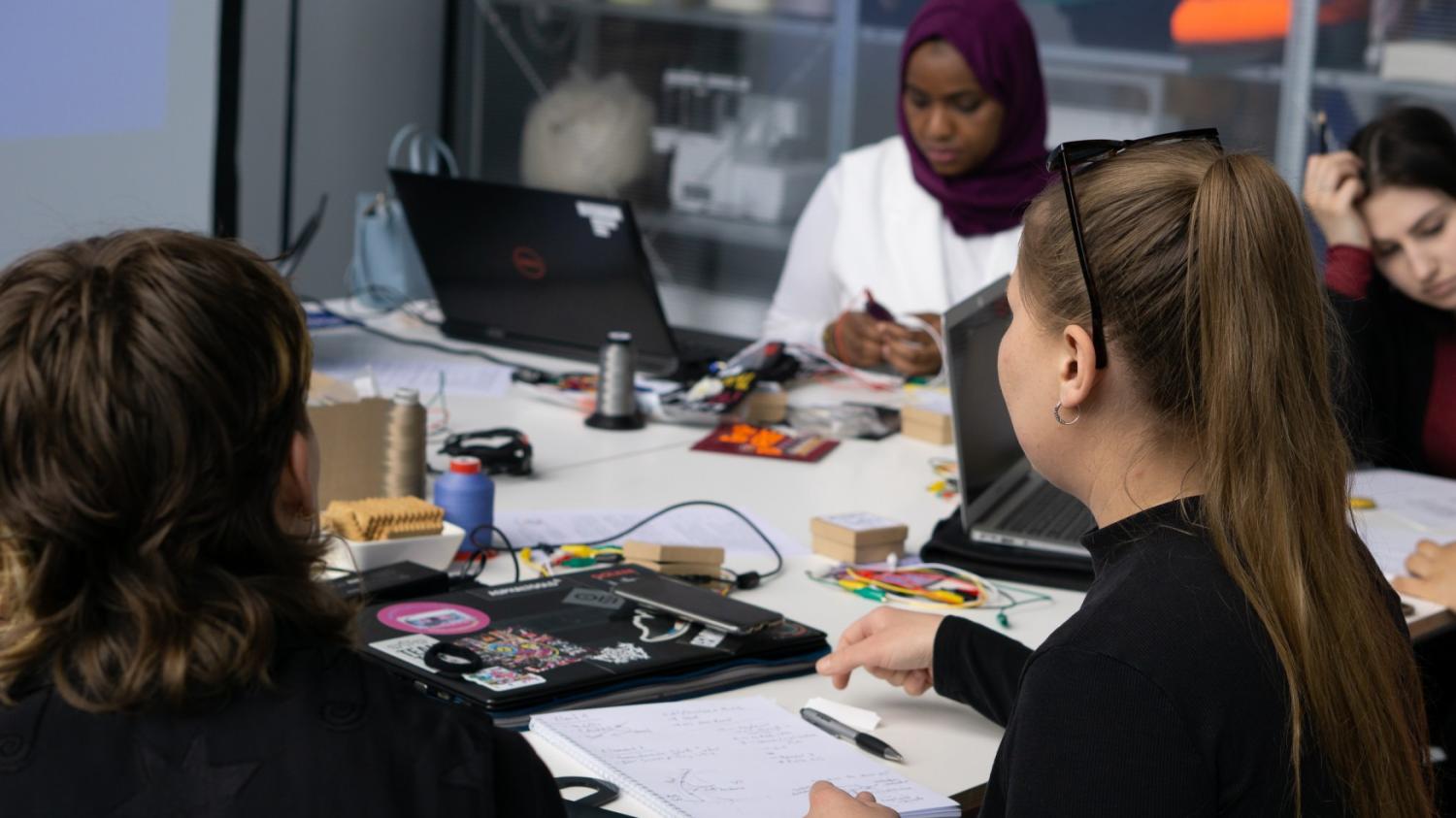
The added value of being an Ambassador is having access to a network that engages in live discussions with open-minded innovators; we grow together through open learning and skill enhancement.
As soon as I arrived in Berlin as a shemakes Ambassador, I felt drawn to the city. I was instantly impressed by the breathtaking views, a city full of nature, with trains that seem to penetrate mountains and forests. Berlin is a culturally diverse city with large communities of expats, the only true differences I noticed were in passport nationalities and religious backgrounds; individuals are unified by the German language and style. Ultimately, I found that Berlin is an interesting city with a lot happening in cutting-edge technology in various areas, especially smart materials and wearable technologies.
I was assigned to visit the Textile Prototyping Lab (TPL), which is based inside a larger research institute. TPL is an interesting, open space for innovation; the advanced technologies and machines are incredible. Moreover, TPL is led by a competent team of textile designers, engineers, and researchers who specialize in smart textiles, materials, and advanced electronics integration within wearables. I was fascinated by the smart operational strategy of TPL and its many target audiences, as there is a synergy between design, research, and industry. TPL also plays a unique role in empowering female entrepreneurs. There are regular events held to inspire more women to start their own businesses and utilize the lab facilities to implement their ideas.
During my trip, I was involved in two workshops. The first one was the e-textiles Workshop, which was mainly for two groups: master's degree students studying Textile and Surface Design from Weißensee Kunsthochschule Berlin (KHB) and students in Garment Technology at the University of Applied Sciences Berlin (HTW) as a part of the Material Innovation master’s course. The workshop introduced the students to e-textiles and provided assistance to guide their projects throughout the semester.
The other workshop, Smart Stitches, was attended by participants from various backgrounds. The workshop incorporated the traditional technique of cross-stitching or embroidery to make interactive art pieces that were upgraded with special e-textile fibers and conductive yarns. The outcome of both workshops was positive; interactions with people of diversified backgrounds were valuable in nurturing my innovative thinking and tech-design perspectives.
During both workshops, I did not directly initiate discussions related to the gender gap. However, I realized that a gender gap was present due to a lack of fashion-tech knowledge among women in the industry. This, alongside the fact that technical and engineering fields are male-dominated, results in the stereotype that technology is a difficult topic to integrate with fashion.
I also had the chance to attend presentations given by students from KHB completing their MA in Textile and Surface Design. They presented individual techniques for fiber making through spinning yarns, material upcycling, and biomaterials — all of which are different looming techniques for making patterned fabric pieces. It was nice to see the results of these experimental approaches to designing textiles.
Overall, being a shemakes Ambassador was a great opportunity for me to explore new labs and globally expand my network. The added value of being an Ambassador is having access to a network that engages in live discussions with open-minded innovators; we grow together through open learning and skill enhancement — both hard and soft. The cross-cultural learning experience was very effective in changing perspectives, broadening horizons, and creating new opportunities.

